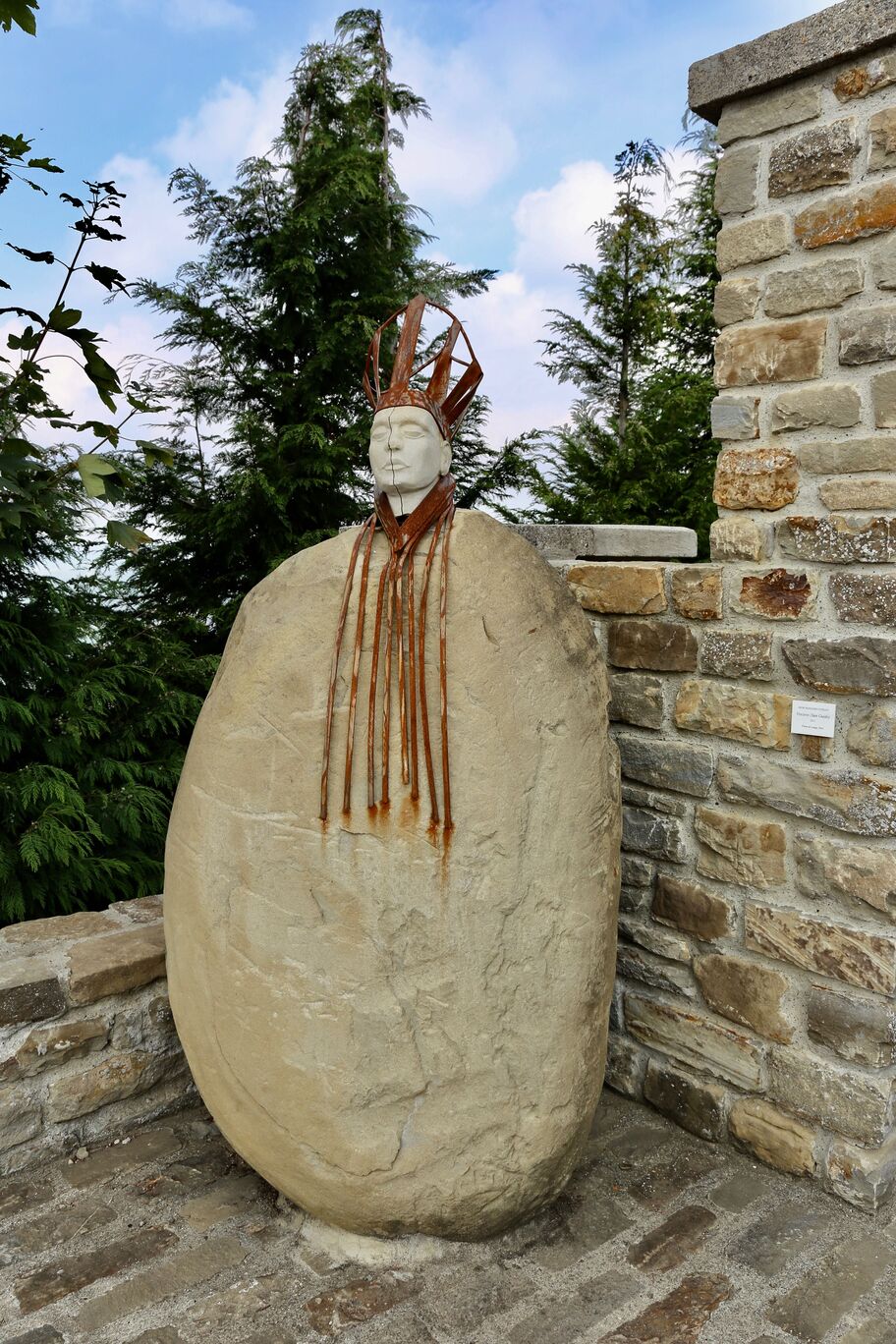
Bergolo
The smallest commune of the Langhe (and one of the smallest of the whole Italy) was one of the first to realize how this territory could be touristically important, and to build modern accommodating and recreational facilities (a swimming-pool, a camping with bungalows, summer houses).
The town is also called “stone town”: all houses have been restored using local sandstone, and the roads have been remade in paving. Such an homogeneity is difficult to find in other places.
From the town’s square, a little walk will lead you to the Romanesque chapel of saint Sebastian, built in the XII century on a panoramic hill looking over the Bormida and Uzzone valleys.
Many houses in town have been decorated with frescos and mosaics made on their external walls by students of the Academy of Fine Arts.
The patronal fair, on every second Sunday in September, and the May fair attract people from all over Piedmont and from abroad.
History
According to the ancient etymology, the name “Bergolo” means “the place where heath grows”; the town was founded around the year 1000.
In 1200 it was owned by the town of Asti, then by the marquis of Saluzzo and, in the sixteenth century, by the Savoia.
| The smallest commune of the Langhe (and one of the smallest of the whole Italy) was one of the first to realize how this territory could be touristically important, and to build modern accommodating and recreational facilities (a swimming-pool, a camping with bungalows, summer houses). The town is also called “stone town”: all houses have been restored using local sandstone, and the roads have been remade in paving. Such an homogeneity is difficult to find in other places. From the town’s square, a little walk will lead you to the Romanesque chapel of saint Sebastian, built in the XII century on a panoramic hill looking over the Bormida and Uzzone valleys. Many houses in town have been decorated with frescos and mosaics made on their external walls by students of the Academy of Fine Arts._x000D_ The patronal fair, on every second Sunday in September, and the May fair attract people from all over Piedmont and from abroad. |
The tiny town of Bergolo, famous for its fabolous music festival
As already mentioned, Bergolo is the smallest village of the Langhe.
It is built in the shape of a triangle, with a little square in the middle; it is a place that cherishes its treasures.
The stone houses along the antique roads are all beautifully restored, and pieces of art make the place even more interesting to visit.
Situated by the cemetery is the 12th century Church of San Sebastiano.
I have a weak spot for Bergolo because it is small, yet so powerful.
Festival
At some point, its mayor took the initiative to organise a music festival for traditional music; the festival grew and grew in popularity, and the village with only eighty inhabitants, now attracts thirty thousand visitors from Italy and abroad.
To me this shows that with a bit of good will, and undoubtedly a lot of perseverance, even the smallest can achieve the greatest.
The festival is held in the open air, each year in May; when the tourists arrive, the village is quite literally flooded with tourists.
All hotels and restaurants in the area are fully booked, and the small roads are lined with cars and tents.
The tiny town definitely pushes above its weight, because it also has a swimming pool, hotels, a campsite, and many holiday houses, next to a few beautiful shops with local products.
As you can see, the festival has put Bergolo ‘on the map’, much to the content of its proud mayor.
Food & Drinks
Ristorante Albergo 'L Bunet is an amazingly grand place for such a tiny village as Bergolo.
You would expect this level of presentation, the taste and general level of service and professionalism perhaps in a big city, but here you find it along a little country road, with beautiful views all around you.
Osteria Langhet is just outside of Bergolo and offers good food in a stunning setting.
There is a pool and playground for the guests.
